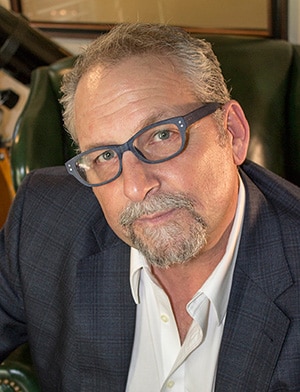
(By Paul Weyland) Sometimes you come up with a revelation that is so important and so misunderstood, you feel like you have a moral obligation to share it with others. Over my decades in media sales, I feel like I have discovered a couple of things that must be shared with others, particularly in this calamitous time in broadcast history.
One idea is how to tell a new and different story about what we do for a living. That story is called “To Sell the Truth,” and it’s another entire article about how account executives can convince local direct decisionmakers (and a few agencies) how to improve the creative we run in our ads by telling the client’s story in an entirely different way, a way the client has never heard before. The other idea is how to avoid surprise cancellations and at the same time convince clients to spend three, even four times what they think they should be spending with you, simply by offering up evidence in the client’s own language to convince them your budget idea is better than theirs. This idea, the concept of providing the client with a return-on-investment formula for their advertising, makes them feel better about spending more money with you, regardless of your geography, your program or format, your ratings (or lack of them), and your prices. This article is the result of a recent podcast I did with Radio Ink. There were several requests to translate the podcast into article form. Here we go, and thank you for your interest.
Explaining this simple formula achieves the following goals:
– It makes advertising with you look like less of a gamble and more of a good, calculated risk.
– It gives you ammunition for justifying higher rates.
– It rationalizes a much larger budget for your station.
– It’s done in a language the client actually understands.
– It usually kills the client’s objection “Cancel my advertising.
– It’s not working” by managing the client’s possibly unrealistic expectations about advertising results.
– It gives you another great way to get an appointment with a decisionmaker.
What do you need in order to show a client how to calculate ROI? Very simple.
– The client’s average sale
– The client’s gross margin of profit (GMP)
– Your cume number (not households)
Now let’s define specifically what these numbers mean.
What is average sale? To calculate average sale, the client simply adds up all of the revenue he/she takes in in the course of a normal sales day and then divides that number by the number of people who bought.
What is gross margin of profit? Gross margin of profit is what’s left over after the client discounts either the cost of materials or labor. Not both. Whichever is higher. GMP does not include cost of utilities, rent, taxes, maintenance, etc. That would be net profit. Asking a client what their net profit is would be boorish, like asking a stranger, “How much money do you take home?”
Let’s take a look at a real scenario and how discussing ROI worked with a real local direct client.
Situation:
– Client is an expensive men’s clothier.
– Client calls in and says he’s tried broadcast before but he’s skeptical because last time, he says, “It didn’t work.”
– Client is willing to spend only $1,000 in one week.
– Station reaches 100,000 people per week.
– Station’s average rate is $150.
Objective:
– To determine how client came up with his budget.
– To determine why last campaign “didn’t work.”
– To manage client’s expectations about results based on facts, not client’s opinion.
– To get client to increase budget.
Strategy:
– Use real numbers to show client that instead of “gambling,” using your station is actually a good, calculated risk.
– To use a chart to manage the client’s expectations about results.
– To come up with a reasonable goal for your campaign.
– To get the client to spend more money based on reasonable expectations about results.
In this case, the client had used the station before. But he was skeptical about his results. So this time, he’s only willing to “gamble” $1,000, too small of a budget for a station that cumes 100,000 persons per week, where an average rate is $150 per commercial. His average sale (pricey) is $800 and his gross margin of profit is what we call “keystone,” or 50 percent. So in other words, let’s say the client goes to the Apparel Mart, the giant semi-annual show in Dallas, and finds a very cool designer shirt that he buys in every size for $100 per shirt. He returns to Austin where he marks that shirt up 100 percent, to $200. When he sells it to a delighted customer, to determine his GMP, he simply subtracts what he’s got into it ($100), and what’s left over is $100, the cost. So, that $100 represents 50 percent, the amount left over that he can reinvest in his business. Is that clear? If it’s not, read it again until you’re fully familiar with the simple math and terminology.
– Client’s budget: $1,000
– Your station’s cume: 100,000
– Client’s average sale: $800
– Client’s gross margin: 50 percent
So I ask the client this question. “How many new customers spending $800 [client’s average sale] does the client believe it would take to break even on a campaign?” His answer — not kidding — “80 or 90.” Huh? Where did that number come from? Answer: fiction. He pulled that number out of his you-know-what. Based on our real numbers, the client would only need 2.5 new customers. Wouldn’t you agree that 2.5 is a distant star to his number of 80-90? Wow. How often does this happen every day in our real world of media sales? How often do we ignorantly just leave ourselves open to disaster?
So then I offer this argument: What if only 1 percent of our audience responded to a great spot run enough times to reach out to the people most likely to want to buy from the client? Remember, the station’s cume audience is 100,000 different people per week. If you are in a small market or you are unrated, come up with a number that you and the client both agree is fair. Count the population in your signal-coverage area and say, “Let’s just say 20 percent of these folks tune us in once per week. That would be X number of people.”
For a 100,000 cume (TV people, please don’t use “households.” Why on earth would you voluntarily chop your biggest number in half?):
So here we go with the numbers. We start with just 1 percent of our cume number.
1 percent = 1,000. Probably won’t happen. Client isn’t giving anything away in his commercial.
1/2 of 1 percent = 500 people each spending an average of $800.
1/4 of 1 percent = 250
1/8 of 1 percent = 125
1/16 of 1 percent = 63
1/32 of 1 percent = 32
1/64 of 1 percent = 16
1/128 of 1 percent = 8
1/256 of 1 percent= 4
1/512 of 1 percent= 2
What was our magic number? Three! That’s a long way from 80-90.
So if somewhere between 1/256th of 1 percent and 1/512th of 1 percent of our audience responds and spends an average of $800, the client breaks even. The client is shocked. So I ask him, “Instead of going after three new customers, why not go after 12?” The client, suspicious, says, “We’ll go after nine,” tripling his original budget.
Fifteen people actually came in (we were the only medium he used that week), responding to a well-crafted commercial run an appropriate number of times so that the people who needed to hear it the most could hear it. The client is ecstatic. But what if we’d run the commercial without having had this discussion first? What would the client have said? “It didn’t work.” Based on what? The 80 90 fictitious number that the client now admits he pulled out of his you-know what? Exactly.
So what do we learn? Without an ROI calculation, you are blind. And you’ll get blindsided, with no defensive strategy when a client cancels because it “didn’t work.” With ROI we manage the client’s expectations about results and we don’t get burned so often with surprise cancellations.
We also learn that with ROI, you can justify a larger budget. We know that with an ROI explanation, you make advertising with you look much, much less risky. And with ROI calculation you separate yourself from all other media reps because you look like you know something the others don’t.
Why not try it? “Because it’s math and I’m no good at that.” Grow up. Once you start using this formula, you’ll never go back to the old way again.
“Because it’s new and I don’t like to try new things.” Good luck with that.
If you need more information on this subject, call me or order my book, Think like an Adman, Sell like a Madman. Also on the website, on the front page: a PDF file with 80 product/service categories and their GMPs. Download for free, but while you’re there, buy some books.
Paul Weyland is an expert in long-term local direct sales. He works in all-sized markets. Skype sales meetings are available. Contact Paul at 512.236.1222 or go to www.paulweyland.com for more information.






Paul, thank-you for what you do, and the passion you bring with it. It can’t be taught, preached or evangelized often enough. Thank-you, thank-you, thank-you.
Thanks, Ronald.
Stellar content, Paul.
You need to take this on the road.
Oh…. You already do.
I printed the article and read it again.
I think I’m getting it. 🙂
Outstanding.